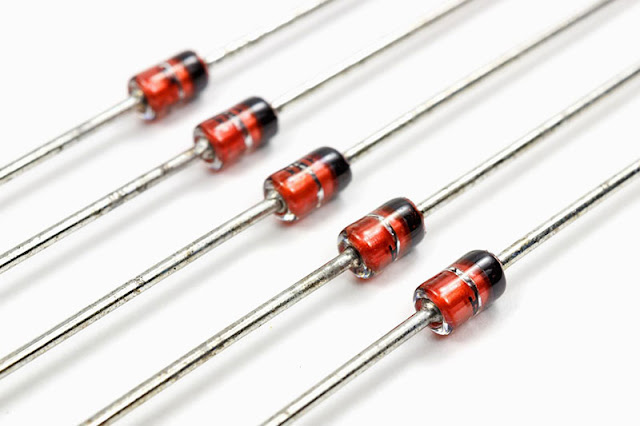What are Diodes and Rectifiers?
Two factors that are essential to the operation of a vast range of electrical devices are diodes and rectifiers. Without them, the electrical current could flow back into other components, causing damage or total system failure.
This article looks at the difference between diodes and rectifiers, their separate workings and operations.
Diodes the protection of ultramodern electronics
As the simplest semiconductor device, diodes are generally two-pin components made from silicon or germanium. Their purpose is to allow current to flow in one direction while preventing it from flowing in the other. When installed in a larger system, the diode protects sensitive electronic parts from being subjected to the wrong amount or type of current.
An introductory example is a television remote that has a compartment for two AA batteries. When the batteries are fitted rightly, the diode allows the current from the batteries to flow through the circuit in the remote, enabling the remote to be used rightly. When the batteries are inserted the wrong way around, still, the diode automatically blocks the current from leaving the batteries in the rear direction. The remote won't work, but the sensitive electronics are safeguarded.
There are numerous types of semiconductor diodes, including
- Avalanche diodes, to cover circuits from high voltage surges
- Zener diodes, to regulate voltage
- Varactor diodes, to electronically tune TV & radio receivers
- Light- emitting diodes(LED), to produce light
- Tunnel diodes, to generate radio-frequency oscillations
Rectifiers a diode with superior current running
A rectifier is a special type of diode that converts alternating current( AC) into direct current( DC). This is an important process, as alternating current is suitable to reverse direction periodically, while direct current constantly flows in a single direction, making it simple to control. There are multiple types of rectifiers, including
Half-wave rectifiers: Rectifiers that permit only half of the AC signal to pass from input to output.
Full-wave rectifiers: Rectifiers that use the full signal, taking the additional use of a motor.
Positive half-cycle rectification: Those where a top diode with positive opposition conducts current while a bottom one with negative opposition blocks it
Negative half-cycle rectification: Those where the top diode is blocked and the bottom one is opened.
Domestic appliances generally contain a diode designed for single-phase rectification, meaning the force voltage changes in unison. Industrial-scale motors and power grids, on the other hand, require multi-phase rectification, which allows for power generation, transmission, and distribution at the same time.
Operations for diodes today
As an integral part of a silicon chip, diodes are found in a huge range of electronic devices. In a microwave oven, for example, a diode works alongside a capacitor to double the voltage conveyed to the cavity magnetron( which generates the microwaves). Diodes are also used in keyboards as part of matrix circuits, which reduce the amount of wiring needed. Experimenters have indeed developed nano-scale diodes from a single DNA patch, which may lead to indeed lower, more powerful electronic devices in the near future.




Comments
Post a Comment